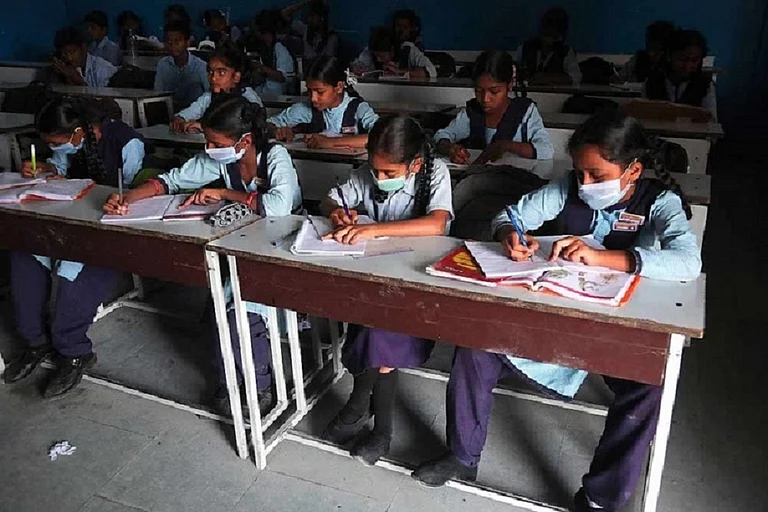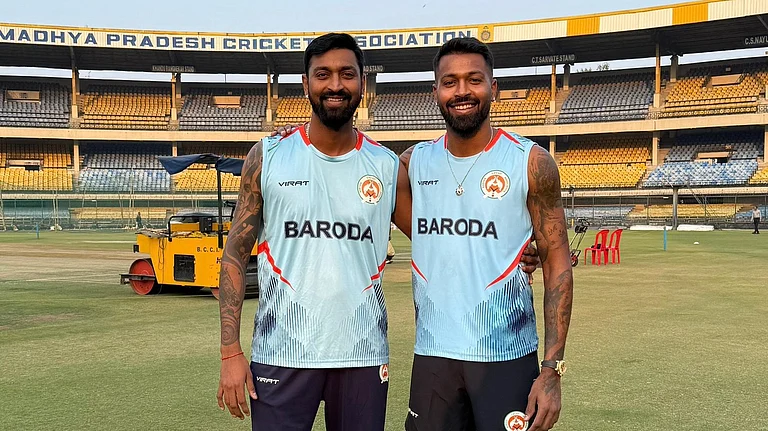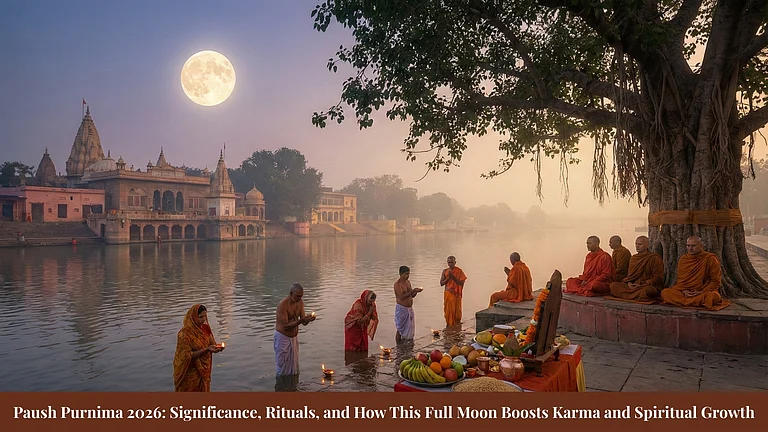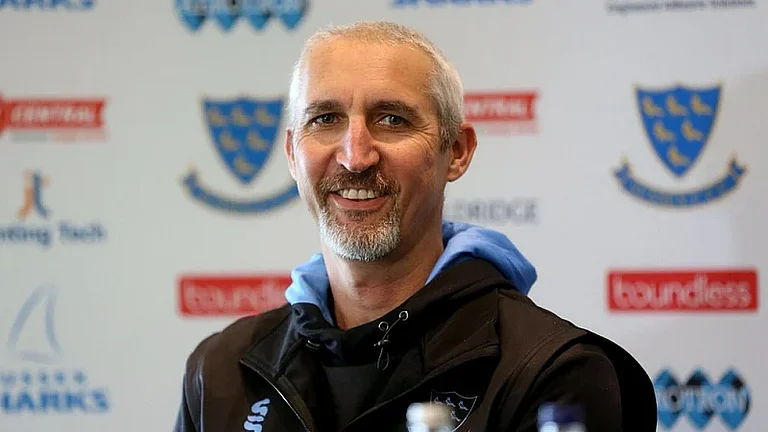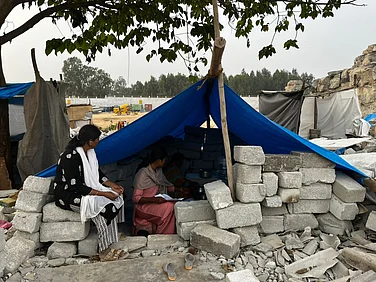AS a story, it captured the essence of disparity. Somewhat unconsciously, though. At least two television channels ran it in late 1997. Several newspapers and magazines had done it earlier. It was about the dangers of slimming pills and the 'weight-loss clinics' springing up across urban India. The story run on one of the channels was particularly effective. It showed the damage done to some people who had taken these 'lose-weight-without-exercise' pills. Thousands of well-off urban Indians fighting excess weight and obesity were going to such clinics, that had mushroomed in India's cities during 1991-96.
There was another story unfolding, at least equally important, that was mostly missed. During the same period, hundreds of millions were eating less than they did in 1991—mainly rural Indians but some urban poor as well. The quantity of pulses and cereals available to Indians averaged 510 grams daily in 1991. By 1995-96, this was down to 461 grams. So while thousands flocked to clinics to address the problems of excess weight, millions were desperately trying not to lose any more weight.
Growing insensitivity is often the baggage of deepening inequality. Yet, huge processes are sweeping the Indian countryside. And we are missing out on these. Either because we don't know better, or—with some of us—because we don't want to. Or we view rural India through filters that make us less uncomfortable. And because our media do such a poor job of informing us about it.
Rural India, meanwhile, refuses to conform to assigned stereotypes. Neither to the cliche of a land where 'time has stood still'. Nor to spectacular claims of progress and 'transformation' made by sarkari economists and peddlers of the development industry. Nor even to portraits of an eternally passive people, waiting for handouts.
India as a whole has changed in 50 years. Life expectancy in a country emerging from colonialism was under 30 years. It is now 60. Famines of the sort that devastated Bengal in the '40s have been unknown since Independence. (Never mind that the press often uses 'hunger' or 'drought' and 'famine' interchangeably. They are very different things.) Literacy and education levels are higher than in 1947. Yes, there have been distinct benefits. But who has collared them? And in what proportion?
Sure, if we draw the baseline 50 years ago, there have been improvements. Would that satisfy you if you were one of those who did not benefit? If we draw a baseline in the last Ice Age, everyone's conditions have improved. But I suspect knowing this won't satisfy the poor. Likewise, the concept of the 'poverty line' has a role and place. But crowing about a 'decline' in poverty from 39 per cent to 21 per cent is silly. If you belong to the 21 per cent, it means nothing. If you belong to those just above the line, you don't know it—not from the quality of life. And anyway, those doing the counting are always from the top 10 per cent of the population.
Bleeding hearts don't help, either. Read the press on rural India. You'll be struck by the fact that—in the press—the rural poor almost never speak. They invariably 'lament' or 'plead' or 'cry' or 'beg' for attention. Sometimes, they even 'wail' or 'weep'. They rarely just 'say' things the way the rest of us do. Because we have decided that that is the way they are.
Kalahandi has been one of the worst victims of stereotyping. This food surplus district with its skilled farmers has long been, in the urban mind, a basket case. The most famous story on it in the '80s painted it as 'a picture of hell' where people 'move in groups, licking water, like dogs'. Poisonous roots and leaves were described as "the only thing that will grow there". All this enables us to evade the reality that Kalahandi's problem is acute exploitation, not natural calamity. Kalahandi produces more food per person than both Orissa and India as a whole do. Its own inhabitants, though, consume only 25 per cent of that food. The rest leaves the region through networks of merchant-moneylenders.
Recently, after distress deaths, Tikamgarh, in the Bundelkhand region, has been painted in the press as 'barren, infertile, unproductive'. Tikamgarh in fact tops Madhya Pradesh's 45 districts as a wheat producer. Hardly unproductive. But when you insist on seeing poverty and prosperity purely as functions of growth—the misreading is logical: there is distress in Tikamgarh and Kalahandi. Therefore, these regions must be dreadfully poor.
How untrue! There are some incredibly wealthy people in both places. And these have grown richer in recent years. 'Growth' has not in itself benefited those who actually till the land and produce the food. (Real poverty levels in prosperous Punjab and Haryana would surprise many.) Growth for growth's sake, as Edward Abbey pointed out, is the ideology of the cancer cell.
Tikamgarh tops MP in wheat production. Yet, in human development, it ranks no. 45, with an infant mortality rate of 195. But we resist the idea that the incredible prosperity of a few is linked to the unbearable misery of many. More and more of the rural poor, however, do recognise this. Less and less are they willing to accept it.
While many degrading aspects of rural Indian life persist, time has not 'stood still' anywhere. People are nowhere quite so passive as we imagine. Rural India seethes with struggle, real or potential, concealed or open. Says one senior administrator: "At least a third of the country is under what we might call low intensity civil war." In another tenth, the intensity is not low. The countryside is in ferment and every structure is under challenge. Because this does not always occur in ways familiar to us doesn't mean it's not happening.
The ruled are no longer willing to be ruled in the old way. The short lifespans of governments is only one indicator of this. Parts of Bihar and Andhra Pradesh are virtually ungovernable. Dogged battles are being waged over land, water and forests. Fisherfolk are protesting against the devastation of their livelihood. The huge ferment among Dalits—who make up the largest number of landless agricultural workers—is here. Since many of these events are localised and seemingly unconnected, we can escape looking at the larger reality: that hundreds of millions are denied the basic minimums of life. Consider the size of the problem. In a country where, at an IIT, you can get the best instruction in the world at a price, 70-100 million children are outside schools. As 'farmhouses' worth crores spring up around Delhi, the country faces a housing shortage of over 30 million. This decade, registered job seekers inched towards 40 million—more than all the unemployed in all the 25 OECD nations put together.
Pack those job seekers in a single queue giving each no more than half a metre. The queue would be 20,000 km long. More than three times India's 6,083 km coastline. (Yet, how many major newspapers today have a full time labour correspondent?) The largest numbers of absolute poor live in India. One of every three persons in the globe lacking safe drinking water is an Indian. The country will enter the next century with close to half its population illiterate. Every fourth person in the planet dying of water-borne or water-related diseases is an Indian. No nation has more people suffering from blindness. Tens of millions suffer malnourishment.
Who are the poor? They are mainly rural Indians. For some, this isn't the 'Other India'. It is India. Around 40 per cent of the Indian poor are landless labourers. Another 45 per cent are marginal farmers. Of the remaining, 7.5 per cent are rural artisans. 'Others' make up the rest. Within these, Dalits and tribals account for a disproportionate number.
So to the bulk of the poor, land, water, forests make up the most important resources. And it is around these that already current battles will intensify. The bitter struggle over the Ravi-Beas, the Cauvery or the Farakka really reflect the colonisation of water right from the village level. But state and governments distort that reflection, intervening on behalf of the rich—even mobilising sections of the poor against their own interests. The carrot and stick, divide, co-opt and rule strategies are pretty old. Consequently, many protests take unfortunate, even casteist turns. That too, sadly, will intensify. But the problems beneath are usually genuine.
You can't escape the big changes: land reform, higher investments in health, education, housing jobs. You can't fix a hole in the heart with a band aid. You can't run away from democratising land, water and forest ownership. There's no evading the dismantling of feudal relations in agriculture. And raising the living standards of hundreds of millions, even if it means having to choose from fewer brands of shampoo.
Was it Victor Hugo who said that there is no force on earth greater than an idea whose time has come? In rural India, that time has come. And the idea is economic and social justice; a more equal control of resources; a life with dignity; not merely growth with some justice, but growth through justice. And us urban middle classes? We do have a choice on the huge changes ahead.
Distorted and odd though the challenges to the existing order may seem, this will be the direction of people over time. Because these are problems that move them. And the urban middle class can decide: does it want to participate in the huge changes ahead? As several once did in the freedom struggle. We do have a choice: will those changes occur within our consent, or outside it?
(P. Sainath is the author of 'Everybody Loves a Good Drought')







